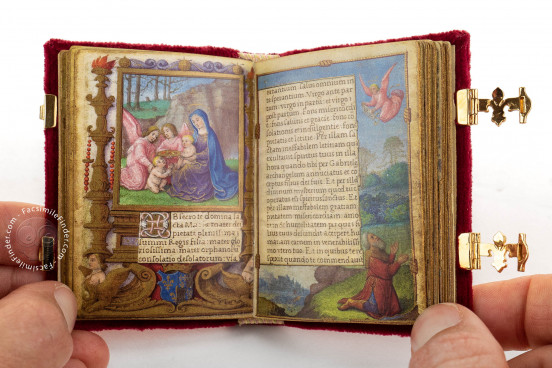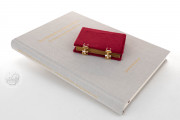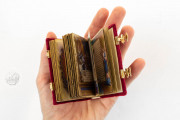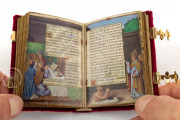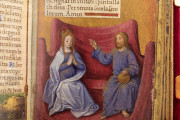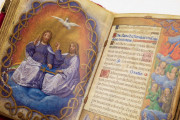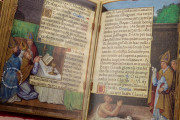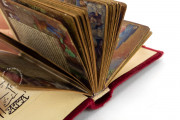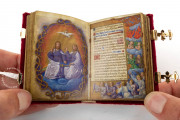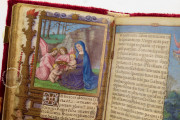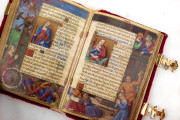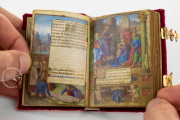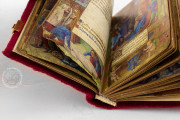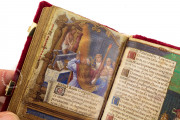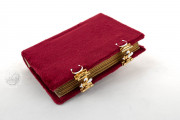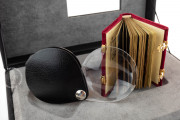The Prayer Book of Claude de France, written and illuminated around 1517, is one of the most famous manuscripts ever made for the French court. With its small format of 6.9 x 4.9 cm and countless number of illustrations, this manuscript was made for Claude, Queen of France.
An Endless Gallery of Images
The manuscript manages to accommodate 132 illustrations from the life of Christ in only 104 pages. Ranging from full-page miniatures to even double-page images, the iconographic apparatus plays a significant role in this codex, as is visible from the little space dedicated to the text. The variety of images is certainly superb and so is the attention to detail, ranging from the representation of a coat fluttering in the wind to an emphatic gesture to wide landscapes.
As the name of the manuscript suggests, the owner of this masterpiece was Claude de France, daughter of Anne of Brittany and Louis XII, and who grew up surrounded by a certain wealth. In 1514, when she was only fourteen, she married François d’Angoulême, who would become King Francis I.
Her figure was described by contemporaries as delicate, generous, and sweet-tempered; however, all her life she had to live with the burden of giving France an heir to the throne so she bore eight children in a period of ten years, which led to her death from exhaustion in 1524.
The Personal Character of the Book
When, at the age of seventeen, she is crowned Queen of France, she seizes the opportunity to ask her favorite artist to create a prayer book so small that she could carry it around all the time. The personal features of the manuscript are visible not only because her coat of arms appears three times throughout it but especially because of the allusions to domestic happiness and the use of the Franciscan cord, an item that connected Claude to her mother Anne of Brittany and which both were very fond of.
Claude and Francis: Amateurs of the Arts
Claude was not the only patron of arts in the couple, indeed, her husband, Francis I of France, was an amateur and sent his agents to Italy to buy for him works by Michelangelo, Titian, and Raffaello. Furthermore, he instructed the building of Château de Chambord on the Loire and had the Castle of Amboise renovated. The ruler even invited the remarkable artist Leonardo da Vinci to spend his retirement there.
Francis I was very fond of da Vinci, who appears to have been a great source of inspiration for the Master of Claude de France, who created a miniature which echoes Leonardo's Virgin of the Rocks.
An Obscure Life
The life of the manuscript remains obscure until World War II when the codex ended up in the hands of H.P. Kraus, a bookseller from Vienna who sold it to collector Alexandre P. Rosenberg in the 1970s. Twenty-one years after his death, his widow Elaine decided to donate this outstanding masterpiece to the Pierpont Morgan Library.
The Ex-libris by Pablo Picasso
The codex also bears an ex-libris by the world-renowned painter Pablo Picasso. It was made especially for Picasso's gallery owner in New York.
Red velvet binding fastened with two gilded clasps carrying the fleur-de-lis emblem of the French kings.
We have 1 facsimile edition of the manuscript "Prayer Book of Claude de France": Gebetbuch der Claude de France facsimile edition, published by Quaternio Verlag Luzern, 2010
Request Info / Price
